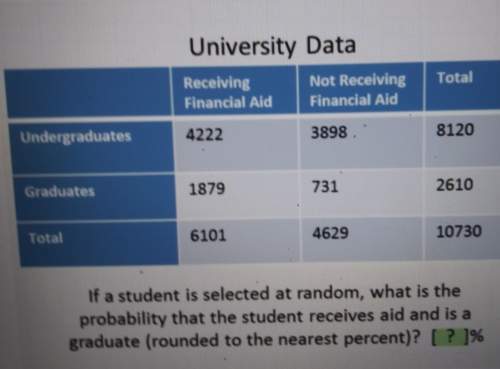
Mathematics, 04.02.2020 21:54 chilanka
Suppose you want to prove a theorem of the form p → (q ∨ r). prove that this is equivalent to showing that (p ∧ ¬q) → r.
p → (q ∨ r) ≡ ¬p ∨ (q ∨ r)implication rule
≡ (¬p ∨ q) ∨ rassociative rule
≡ ¬(p ∧ ¬q) ∨ rㅤㅤㅤ ㅤ how did i get this?
≡ (p ∧ ¬q) → rimplication rule
what rule was used to get ¬(p ∧ ¬q) ∨ r from (¬p ∨ q) ∨ r ?

Answers: 3


Another question on Mathematics

Mathematics, 21.06.2019 15:30
Consider the integral: 4 0 16 − y2 − 16 − y2 4 1 x2 + y2 dz dx dy . (a) describe w. use the standard view of the x, y, and z axes. front half of a cone with a rounded top. full cone with a flat top. right half of a cone with a flat top. front half of a cone with a flat top. right half of a cone with a rounded top.
Answers: 1

Mathematics, 21.06.2019 19:30
Carlos spent 1 1/4 hours doing his math homework he spent 1/4 of his time practicing his multiplication facts how many hours to carlos been practicing his multiplication facts
Answers: 2

Mathematics, 22.06.2019 00:30
When you flip a biased coin the probability of getting a tail is 0.6. how many times would you expect to get tails if you flip the coin 320 times?
Answers: 1

Mathematics, 22.06.2019 00:30
Nicole purchased a container of cashews that weighs 5 kilograms. zion purchased a container of cashews that weighs 4,900 grams. how many more grams of cashews did nicole purchase?
Answers: 1
You know the right answer?
Suppose you want to prove a theorem of the form p → (q ∨ r). prove that this is equivalent to showin...
Questions





History, 26.10.2019 05:43

Mathematics, 26.10.2019 05:43

Mathematics, 26.10.2019 05:43


Social Studies, 26.10.2019 05:43

Mathematics, 26.10.2019 05:43

Mathematics, 26.10.2019 05:43

Mathematics, 26.10.2019 05:43




History, 26.10.2019 05:43

Health, 26.10.2019 05:43


Mathematics, 26.10.2019 05:43

 part.
part.
 is improper, I was just stressing the fact that we distributed the negation to every term in the parenthesis. So, since a double negation cancels out, you're left with
is improper, I was just stressing the fact that we distributed the negation to every term in the parenthesis. So, since a double negation cancels out, you're left with

 from
from  , you simply have to negate the first parenthesis and distribute the negation as discussed.
, you simply have to negate the first parenthesis and distribute the negation as discussed.


